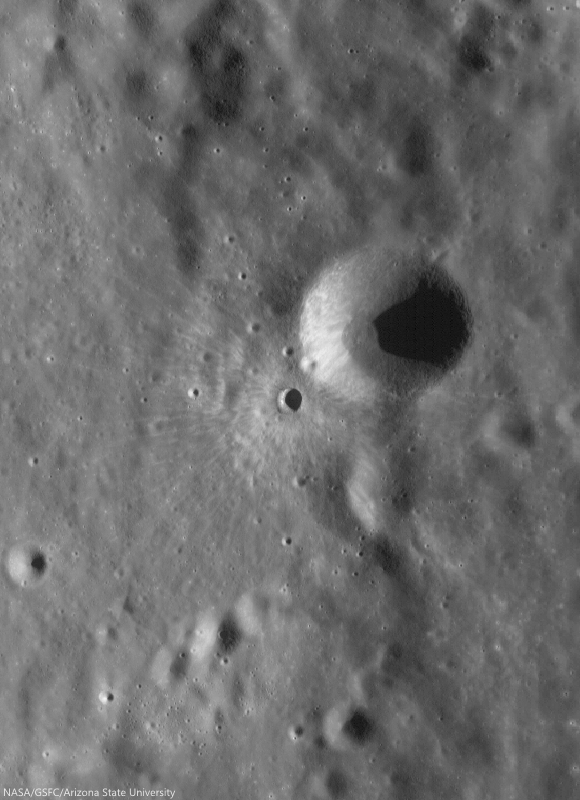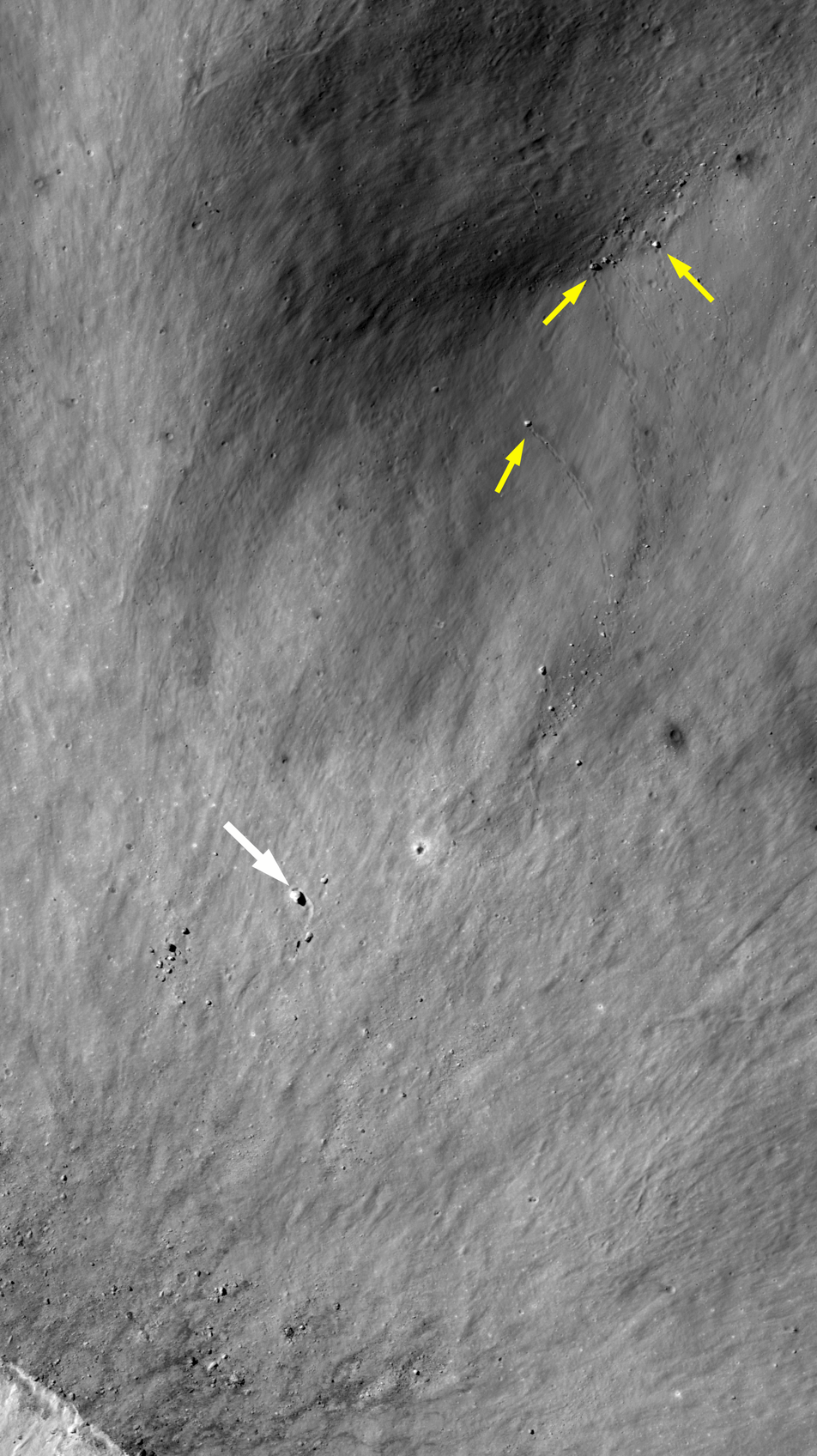 |
| A house-sized boulder left a clear impression, immediately beyond the east rim of a young 1.6-km crater (rim crest to the left), all in a full-sized reproduction, 988 meter-wide field of view from LROC NAC observation M182995612R, LRO orbit 12068, February 4, 2012; 48.59° incidence, resolution 85 cm from 83.56 km over 20.98°S, 80.74°E [NASA/GSFC/Arizona State University]. |
LROC News System
The boulder above (21.085°S, 80.777°E) in the opening image is likely debris ejected during the violent excavation of the 1.6-km diameter crater immediately to the west (left).
The boulder was deposited ballistically; the distance it travelled and its time of flight are related to its ejection angle and velocity.
The boulder was deposited ballistically; the distance it travelled and its time of flight are related to its ejection angle and velocity.
For the boulder, was this flight a "small step" or a "giant leap?"
Looking at the image above, we can deduce that the boulder was deposited with enough force to make a noticeable impression in the ground. However, a more forceful landing would have highly fragmented the boulder.
Looking at the image above, we can deduce that the boulder was deposited with enough force to make a noticeable impression in the ground. However, a more forceful landing would have highly fragmented the boulder.
Explore the entire crater and its ejecta below:
HERE.
 |
| The house-sized boulder (yellow arrow), which left its impression just beyond the east rim of the unnamed young 1.6-km crater that, in turn, sits on the west flank of Hecataeus N, shown in the context of a 7.86 km-wide field of view from LROC NAC mosaic M182995612LR, LRO orbit 12068, February 4, 2012; 48.59° incidence, resolution 85 cm from 83.56 km over 20.98°S, 80.74°E [NASA/GSFC/Arizona State University]. |
 |
| The fresh crater (center) on the southwest slope of Hecataeus N (10.82 km; 20.91°S, 80.944°E) excavates the deepest material originally turned up by "N" while both, in turn, sampled the very ancient Hecataeus interior (southwestern half of this 40-km wide field of view) and, even further, material turned out by Humboldt, to the south (see below), a powerful impact that significantly filled in and covered over the floor of Hecataeus. This is an example of something planners look when making good landing site choices, ones likely to efficiently utilize precious resources. LROC WAC observation M177109146C (604 nm), LRO orbit 11236, November 28, 2011; 68.1° incidence, resolution 58.91 meters from 43.76 km [NASA/GSFC/Arizona State University]. |
In honor of the 45th anniversary of the Apollo 11 lunar landing (July 20, 1969), revisit some of our previous posts about large boulders visited by astronauts:
Pinpoint Landing on the Ocean of Storms (Apollo 12)
Trail of Discovery at Fra Mauro (Apollo 14)
Finally, revisit some of the best LROC images of the Apollo 11 landing site and see if you can find any large boulders. You should find very few large boulders, as the mission planners sought a low-risk site for the first Moon landing:





No comments:
Post a Comment